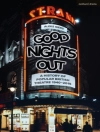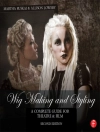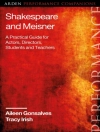No medieval writer reveals more about early English drama than John Lydgate, Claire Sponsler contends. Best known for his enormously long narrative poems The Fall of Princes and The Troy Book, Lydgate also wrote numerous verses related to theatrical performances and ceremonies. This rich yet understudied body of material includes mummings for London guildsmen and sheriffs, texts for wall hangings that combined pictures and poetry, a Corpus Christi procession, and entertainments for the young Henry VI and his mother.
In The Queen’s Dumbshows, Sponsler reclaims these writings to reveal what they have to tell us about performance practices in the late Middle Ages. Placing theatricality at the hub of fifteenth-century British culture, she rethinks what constituted drama in the period and explores the relationship between private forms of entertainment, such as household banquets, and more overtly public forms of political theater, such as royal entries and processions. She delineates the intersection of performance with other forms of representation such as feasts, pictorial displays, and tableaux, and parses the connections between the primarily visual and aural modes of performance and the reading of literary texts written on paper or parchment. In doing so, she has written a book of signal importance to scholars of medieval literature and culture, theater history, and visual studies.
Tabella dei contenuti
List of Abbreviations
Introduction: Theater History as a Challenge to Literary History
Chapter 1. Shirley’s Hand
Chapter 2. Vernacular Cosmopolitanism: London Mummings and Disguisings
Chapter 3. Performing Pictures
Chapter 4. Performance and Gloss: The Procession of Corpus Christi
Chapter 5. Inscription and Ceremony: The 1432 Royal Entry
Chapter 6. Edible Theater
Chapter 7. The Queen’s Dumbshows
Chapter 8. On Drama’s Trail
Afterword
Notes
Works Cited
Index
Acknowledgments
Circa l’autore
Claire Sponsler is Professor of English at the University of Iowa and author of a number of books, including Ritual Imports: Performing Medieval Drama in America, winner of the Barnard Hewitt Award of the American Society for Theatre Research.












